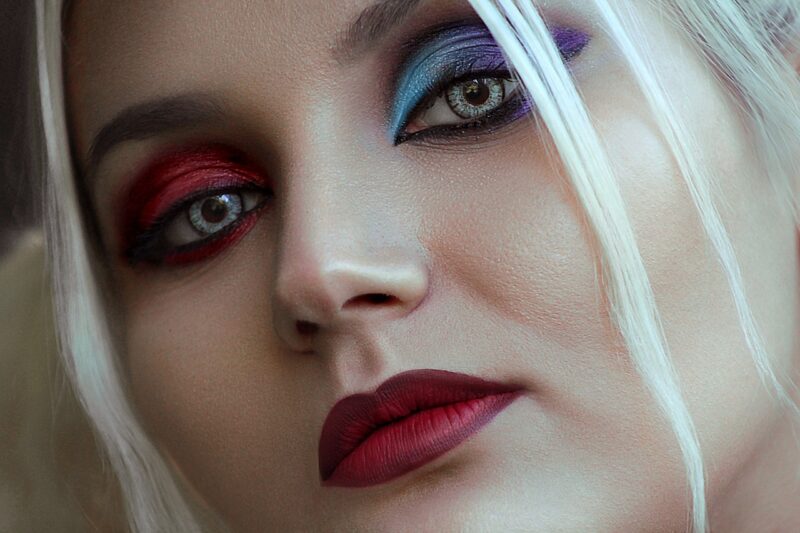How Harley Quinn Became a Fan-Favorite Villain (And Hero)
November 16, 2024

Harley Quinn, originally created as a sidekick for the Joker in Batman: The Animated Series in 1992, has transformed over the years into one of the most beloved characters in the DC Universe. Her journey from a psychotherapist to a chaotic antiheroine captures fans’ imaginations, making her an enduring and complex figure in comics, television, and film. In this article, we’ll delve into her origins, character development, and cultural impact, exploring what makes Harley Quinn a fan-favorite villain-turned-hero.
1. The Origins of Harley Quinn
Harley Quinn was first introduced in the episode “Joker’s Favor,” where she was depicted as the Joker’s aide de camp, showcasing a playful yet loyal personality. Created by writer Paul Dini and artist Bruce Timm, Harley was initially conceived as a comedic foil to the Joker. However, her unique background as Dr. Harleen Quinzel—a psychiatrist at Arkham Asylum—adds depth to her character. Her infatuation with the Joker leads her to embrace a life of crime, abandoning her previous identity for chaotic adventure.
**Key Aspects of Her Origin:**
– **Psychological Elements:** Harley’s transformation from a professional psychiatrist to the Joker’s accomplice reflects themes of obsession and identity. Her story provides insight into the effects of toxic relationships on mental health.
– **Visual Design:** Harley’s iconic jester costume, which is reminiscent of traditional jesters, plays a significant role in her character identity. The elaborate design, featuring black, red, and white, sets her apart in the crowded world of DC characters.
– **Voice Acting:** Voiced originally by Arleen Sorkin, Harley’s lively and distinct voice contributed to her popularity. The animated series brought her quirky personality to life, making her relatable and endearing.
2. Evolution from Villain to Antihero
As Harley Quinn transitioned from villain to antihero, her character experienced significant evolution in both comic storylines and other media adaptations. This transformation expanded her fan base and influenced how audiences perceive her.
**Key Changes in Characterization:**
– **Breaking Free from the Joker:** In several stories, such as the “Harley Quinn” comic series, Harley begins to assert her independence from the Joker, showcasing her strength and ability to stand alone. This shift resonates with fans seeking empowered female characters who redefine their identities.
– **Complex Relationships:** Harley’s relationships with characters like Poison Ivy allow her to explore friendship and partnership outside of her toxic ties with the Joker. These connections showcase her growth and provide her with a supportive network.
– **Flawed but Relatable:** Harley’s struggles with identity, love, and morality make her a multifaceted character. Readers and viewers appreciate her vulnerability alongside her resilience, making her relatable despite her often chaotic lifestyle.
3. Representation in Various Media
Harley Quinn’s presence expands beyond comics into television, film, and video games, demonstrating her versatility as a character.
**Media Highlights:**
– **Animated Series:** Following the success of the original animated series, Harley returned in “Batman Beyond” and “The New Batman Adventures,” deepening her character arc. Shows like “Harley Quinn” (2019) emphasize her evolution into an independent antihero, allowing audiences to engage with her personality in new ways.
– **Film Appearances:** Harley’s portrayal by Margot Robbie in “Suicide Squad” and “Birds of Prey” introduced her to a wider audience. Robbie’s performance captures Harley’s charm and complexity while showcasing her as a formidable character. The films emphasize her independence and character growth, from being the Joker’s girlfriend to leading her own story.
– **Video Game Appearances:** Harley has also appeared in various video games, such as the “Batman: Arkham” series, where players can explore her chaotic nature through interactive gameplay. These appearances solidify her presence as a central figure in the DC Universe.
4. Cultural Impact and Icon Status
Harley Quinn’s impact is evident in her presence within pop culture, becoming an icon embraced by diverse audiences. Her blend of comedy, villainy, and empowerment resonates strongly in an age where fans celebrate dynamic characters.
**Cultural Contributions:**
– **Feminist Symbol:** Harley’s journey offers a narrative of self-discovery, freedom, and the rejection of traditional gender roles. Many fans find her exciting juxtaposition of characteristics—being both playful and dangerous—appealing in a landscape often dominated by stereotypical representations of women.
– **Fashion Influence:** Harley’s distinctive style has influenced fashion trends, with her costumes generating popularity in cosplay and merchandise. The red and black color scheme, alongside her playful accessories, make her a stylish choice for conventions and fan celebrations.
– **Fan Engagement:** Harley Quinn has inspired fan art, memes, and community content across various platforms. Her unique personality encourages creativity and interaction with fellow fans, building a vibrant community around her character.
5. Conclusion: Harley Quinn’s Enduring Appeal
Harley Quinn’s metamorphosis from villain to antihero represents the complexity of identity and the power of independence. Whether she is serving as the Joker’s sidekick or taking center stage in her own adventures, Harley resonates with audiences due to her multi-dimensional character.
Today, she is celebrated not just as a villain, but a symbol of empowerment, creativity, and resilience. Her popularity will likely continue to grow, reflecting our society’s appetite for characters who challenge norms and embrace their individuality.
As we anticipate future stories featuring Harley, fans can be assured that her unique narrative will evolve, demonstrating once again why she has become a cherished figure in the realm of comic book heroes and villains.







